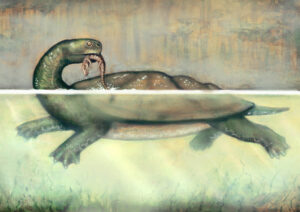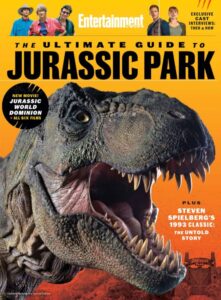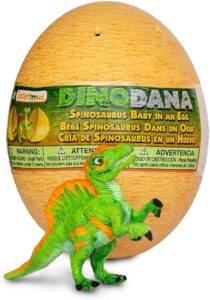How to Make Dinosaur From Paper
While some might argue that crafting a dinosaur from paper is overly complex, the process becomes surprisingly manageable with the right techniques. One begins by selecting the appropriate paper, which lays the foundation for a sturdy and visually appealing dinosaur.
From mastering basic folds to assembling the majestic T-Rex or the towering Brachiosaurus, each step brings one closer to creating a prehistoric marvel. Adding details and color breathes life into these creatures, transforming simple sheets into dynamic sculptures.
The final step, displaying your dinosaurs, not only showcases your craftsmanship but also invites further exploration into the art of paper folding.
Key Takeaways
- Select appropriate paper based on desired durability and aesthetic, considering cardstock for sturdiness and origami paper for easier folding.
- Master various folding techniques, such as valley and mountain folds, to accurately shape the dinosaur's body and limbs.
- Enhance your dinosaur with colors and details using markers or paint, focusing on realistic features like teeth and eyes.
- Display your paper dinosaur in a well-lit, visible area, protecting it from damage and fading to ensure its longevity.
Choosing Your Paper
Selecting the right type of paper is the first crucial step in crafting your paper dinosaur, as it directly influences the project's durability and aesthetic appeal. One must consider the paper's thickness and flexibility. Thick paper, like cardstock, ensures a sturdy model but requires more force to fold. Conversely, thinner paper, such as origami paper, offers ease in folding but may not withstand wear and tear.
Additionally, the paper's texture and color play a significant role in the final look of the dinosaur. Matte finishes provide a realistic touch, whereas glossy papers add a whimsical element. It's imperative to balance these aspects to achieve a creation that not only captivates but endures.
This methodical approach empowers enthusiasts to embark on their paper-crafting journey with confidence.
Basic Folding Techniques
Having chosen the right type of paper, it's crucial to master a few basic folding techniques to bring your paper dinosaur to life.
First, there's the valley fold, where you'll gently crease the paper inwards, creating a dip similar to a valley's contour. It's foundational for shaping the body.
Then, progress to the mountain fold, essentially the valley's opposite, pushing the crease upwards, vital for crafting the dinosaur's spine.
A precise accordion fold, involving alternating mountain and valley folds, will give your dinosaur textured skin.
Don't overlook the importance of the squash fold, pressing down on a piece of paper to flatten it, which is perfect for broadening limbs.
Mastery of these folds isn't just technique; it's the freedom to transform a flat sheet into a three-dimensional masterpiece.
Crafting the T-Rex
Armed with basic folding techniques, you're now ready to embark on the intricate task of crafting a paper T-Rex, starting with its formidable head. The process demands precision and patience, as you'll meticulously fold and sculpt to bring this prehistoric predator to life. Here's a quick guide to ensure your T-Rex stands out:
| Step | Description |
|---|---|
| 1 | Fold the paper diagonally to form a base triangle. |
| 2 | Crease the top layer to fashion the T-Rex's snout. |
| 3 | Flip and fold the paper inward to outline the jawline. |
| 4 | Add detailed folds to create the eyes and teeth. |
This table encapsulates the essential steps to craft your T-Rex's head, a critical component of your paper dinosaur. Each fold brings you closer to reviving the mighty Tyrannosaurus Rex in paper form.
Assembling a Brachiosaurus
To begin assembling a Brachiosaurus, crafters first need to gather the necessary materials, ensuring they've the right paper quality and tools for precise folding.
The process follows a step-by-step folding guide, tailored to replicate the Brachiosaurus's distinct long neck and sizeable body with accuracy.
This methodical approach ensures that each fold contributes to the dinosaur's intricate final shape, creating a striking paper model.
Gathering Necessary Materials
Before assembling a Brachiosaurus model from paper, you'll need to gather a few specific materials, including construction paper, scissors, glue, and a template of the dinosaur's skeletal structure for accuracy. These items ensure that the model not only takes shape accurately but also stands the test of playful handling or display.
| Material | Purpose | Source |
|---|---|---|
| Construction Paper | To create the dinosaur's body. | Craft Store |
| Scissors | For cutting out the template accurately. | Home or Office |
| Glue | To assemble and secure the paper pieces. | Craft or Hardware Store |
| Template | Provides a guide for cutting and folding. | Online Download |
Each material plays a crucial role in bringing the Brachiosaurus to life, offering enthusiasts the freedom to create a precise and detailed model.
Step-by-Step Folding Guide
With all the necessary materials gathered, the first step in assembling your Brachiosaurus model involves carefully cutting out the dinosaur's skeletal structure from the template provided. Ensure each piece is detached with precision to maintain the integrity of the design.
Next, fold along the dotted lines indicated on each piece, creating the base shape of your dinosaur. It's crucial to press firmly along each fold to establish a crisp, clean edge, which will aid in the stability of the structure.
Once all pieces are folded correctly, begin connecting them using the tabs and slots designed to interlock without the need for adhesive. This step requires patience and a gentle touch to avoid tearing. Your Brachiosaurus takes shape as each part is meticulously joined, embodying the freedom of creation.
Adding Details and Color
Once your paper dinosaur takes shape, meticulously adding vibrant colors and precise details will breathe life into your creation. Start by selecting markers, colored pencils, or paint to infuse your dinosaur with hues that reflect its wild nature. Imagine the freedom this creature once roamed with and let that guide your color choices. Bright greens, deep blues, or even patterns can mimic the diversity found in nature.
Next, focus on the details that define a dinosaur's essence: sharp teeth, textured skin, and piercing eyes. Use a fine-tipped pen or brush to add these intricate features, ensuring they're proportionate and realistic. This step demands patience and precision, allowing your artistic freedom to flourish within the bounds of accuracy.
Displaying Your Dinosaurs
After meticulously crafting and coloring your paper dinosaurs, selecting the ideal spot for their display becomes crucial.
It's essential to consider both the aesthetic appeal and the environmental conditions of the chosen location to ensure the longevity of your creations.
Furthermore, safeguarding your paper dinosaurs from damage, such as fading and physical wear, involves strategic placement and possibly protective measures.
Choosing Display Locations
Selecting the perfect spot for your paper dinosaur display involves considering both the visibility and the environmental conditions of the chosen area. It's crucial to find a balance that showcases your craft without risking damage. Here are key factors to guide the placement:
- Light Exposure: Aim for areas with indirect light to prevent fading.
- Humidity Levels: Choose spots with stable, low humidity to avoid paper warping.
- Traffic Flow: High-visibility areas with minimal touch risk are ideal to display your dinosaurs.
- Display Height: Position your creations at eye level for maximum impact, ensuring they captivate attention without being obstructed.
Protecting Paper Dinosaurs
Having identified the optimal location for your paper dinosaur display, it's crucial to focus on strategies for safeguarding these delicate creations from potential harm.
First, consider enclosing the dinosaurs in clear, acrylic display cases. These cases not only prevent dust accumulation but also shield the paper from direct sunlight, which can cause fading and deterioration over time.
It's advisable to maintain a stable humidity level, as excessive moisture can weaken the paper, leading to warping or mold. Silica gel packets placed discreetly within the display area can absorb excess moisture, ensuring the dinosaurs remain in pristine condition.
Conclusion
In wrapping up, one's journey from selecting the perfect paper to mastering precise folds breathes life into paper dinosaurs, showcasing that practice makes perfect.
Crafting a T-Rex or assembling a Brachiosaurus, then adding vibrant details, transforms simple sheets into prehistoric marvels.
Finally, displaying these creations not only immortalizes one's effort but also adds a touch of the Jurassic to any setting.
It's clear, with each crease and color, that these paper dinosaurs are more than just crafts; they're a labor of love.




